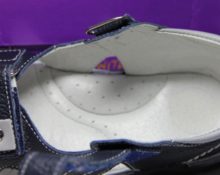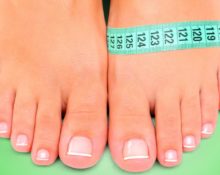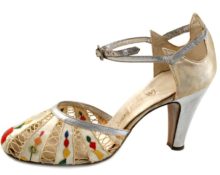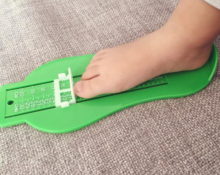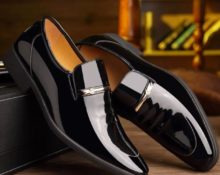An instep support in orthopedic shoes for flat feet is an important element. With this pathology, a large load falls on the spine. The arch support helps to correctly distribute the load and fix the arch of the foot in the correct position.. But is this element needed in regular shoes and is it worth paying extra for it? And most importantly, are shoes without instep support harmful, what consequences can its absence lead to, and how to choose it correctly? Read about this and other features of the instep support further.
A little about the structure of shoes
To fully understand what this element is, you need to have a good understanding of the structure of the shoe. In fact, everything is not so simple here. The shoe has 22 parts, lower and upper parts. Each part has external, internal and intermediate elements.
We will not dwell on the upper part for long, since it is not the main one in this matter. This is everything that is above the sole. The instep support is located at the bottom.External elements include the sole, heel, heel, welt and outsole.
Reference! The outsole is shaped like the toe-calf part of the sole and is attached to its running surface. Needed for protection against abrasion. The welt is the main part of the fastening of the bottom of the shoe.
The internal elements include the main and insoles. The main insole is made of leather, insole cardboard or a combination of these materials. The insole serves for aesthetics and comfort; it completely repeats the shape of the main insole.
And finally, the intermediate elements:
- instep support – attached between the main insole and the sole;
- padding - it fills the void under the main insole;
- gasket - located between the substrate and the sole, needed to increase the heat-shielding properties;
- backing - between the interlining and the sole.
What kind of element is an instep support?
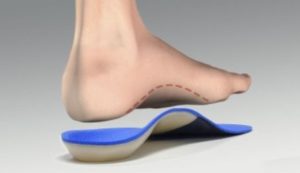 An instep support or pad is a convex part of an insole or a separate pad for shoes. Placed in the forefoot, midfoot or rearfoot, it supports the arch of the foot and evenly distributes the load when walking. Another function is to maintain the dimensional stability of the sole, which is especially important when the foot is deformed.
An instep support or pad is a convex part of an insole or a separate pad for shoes. Placed in the forefoot, midfoot or rearfoot, it supports the arch of the foot and evenly distributes the load when walking. Another function is to maintain the dimensional stability of the sole, which is especially important when the foot is deformed.
There are two types of instep supports: a separate element and one molded into the insole. We sell separate instep supports for the desired part of the shoe, ready-made shoes with a built-in shank, or orthopedic insoles.
Important! It is a mistake to call an orthopedic insole an instep support. This is just the protruding part of it.
What is it made from?
Elements differ not only in location and purpose - the materials are also different:
- leather, leatherette;
- cork;
- metal;
- plastic;
- gel or silicone;
- tree;
- fiberglass.
Gel pads are sold separately or with the insole.Rarely found in ready-made shoes. For it, a metal or plastic plate is often used, curved in the shape of an arch and covered with leather.
Functions of arch support in shoes
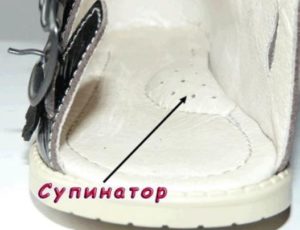 It is designed to support the foot and reduce stress on the spine and joints. Some types of instep supports are made of elastic material. With flat feet, it supports the arch of the foot and helps form the longitudinal arch. Metal plates, in addition to supporting the foot, increase the service life of shoes by reducing their deformation. Therefore, the price for such shoes will be higher than for shoes without a heel, which will quickly wear out and require the purchase of new ones.
It is designed to support the foot and reduce stress on the spine and joints. Some types of instep supports are made of elastic material. With flat feet, it supports the arch of the foot and helps form the longitudinal arch. Metal plates, in addition to supporting the foot, increase the service life of shoes by reducing their deformation. Therefore, the price for such shoes will be higher than for shoes without a heel, which will quickly wear out and require the purchase of new ones.
Types of arch supports
The most common type is a metal plate curved in the shape of an arch.. It is attached between the sole and the main insole, covered with leather or leatherette. There are leather, cork or plastic pads.
A gel pad is suitable for open shoes. It is attached to the insole with a transparent silicone plate and remains invisible. These pads are available for the heel, forefoot and center of the foot. They help distribute the load and ease the impact when walking, which is especially important for high-heeled shoes.
If gel pads don't work, you can try instep support with elastic band. True, it is not suitable for open shoes or sandals. It consists of a soft pad and an elastic band that closes in a circle. The instep support is put on the leg so that the pad is on the foot, and the elastic band secures it around the leg.
Reference! Orthopedic insoles also have arch support. As a rule, this is a compaction in one of the parts of the sole - back, front, central.
How to choose the right shoes with arch support?
The choice of shoes with arch support depends on its purpose.For a healthy, anatomically correct foot, shoes with an orthopedic insole for prevention are selected - VP-1 and VP-6. VP-1 has a seal for the internal longitudinal arch, and VP-6 has a lining for the transverse and internal arch. Both options are used to maintain the correct shape of the foot. Useful for heavy and constant stress on the leg joints - for athletes, hairdressers, salespeople, pregnant women and overweight people.
Important! There are hallux valgus and varus deformities. With a valgus foot, the foot curves inward, and with a varus foot, it curves outward. Varus deformity is called clubfoot, valgus is called flatfoot.
For hallux valgus, shoes with VP-2 and VP-5 insoles are used. VP-2 is equipped with an instep support for the heel of the foot, while VP-5 has both for the heel and forefoot.
As mentioned above, An important aspect when choosing shoes with heels is their purpose. And if you need a preventative pair, you can choose it yourself. The main thing is that the size fits perfectly and the arch support fits into the right part of the foot. But for any type of deformation, only a doctor prescribes insoles, and they are made individually from a cast of the foot.
Why is arch support so important in children's shoes?
Heeling in shoes for children is a separate and controversial topic. What it is necessary for pathology or injury of the leg, everyone knows. The situation is much more complicated with the so-called preventive arch supports. The opinion of orthopedists is divided here. Some consider it necessary to buy orthopedic insoles for a healthy child as a preventive measure for flat feet. There are orthopedists who believe that using an insole with arch support is important from the first steps. This is explained by the fact that the instep support:
- supports the longitudinal and transverse arches of the foot;
- reduces the load on the fragile children's spine;
- prevents diseases associated with foot deformities;
- forms the melting shape of the foot with a characteristic arch;
- makes walking easier, adding stability.
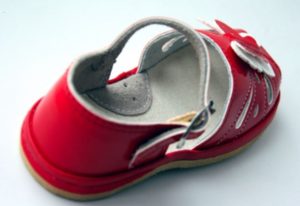 Other experts are categorically against this approach. They explain this by the fact that wearing shoes with arched seals with a healthy foot up to 7–9 years old can provoke longitudinal flat feet. This can happen due to the fact that muscles that constantly have rigid support atrophy and cease to perform their function.
Other experts are categorically against this approach. They explain this by the fact that wearing shoes with arched seals with a healthy foot up to 7–9 years old can provoke longitudinal flat feet. This can happen due to the fact that muscles that constantly have rigid support atrophy and cease to perform their function.
The famous pediatrician Evgeny Olegovich Komarovsky is skeptical about arch supports in children's shoes. He says that this element in no way affects the formation of the foot, just as gloves do not form the hands, and a hat does not form the head.
Reference! We are born with a flat foot and have a fat pad that acts as a calf. Only by the age of 7-9 years does a child’s foot fully develop and become similar to an adult’s. Then the use of orthopedic insoles as a preventive measure is allowed. But the instep support of such products should be low and soft.
How do orthopedic arch supports combat flat feet?
It is important to distinguish the supinator from the pronator. The second is used to correct transverse flat feet, or more precisely, to support the forefoot or transverse arch. An instep support is used to treat longitudinal flat feet. It supports the longitudinal arch along the inner center edge or heel area.
Important! It is possible to completely cure flat feet and return the foot to its anatomically correct shape only in childhood, when the bone and muscular-ligamentous apparatus is just forming.
Flat feet in adults cannot be completely cured. All bones and muscles have already formed, which means that it will only be possible to alleviate the symptoms and stop further deformation. This is why you need an orthopedic insole with a shim. It fixes the normal position of the foot and acts as a shock absorber, which is important for the musculoskeletal system.
Indications and contraindications for orthopedic instep supports
An orthopedic arch support is indicated for changes in the shape of the foot and heavy load on the joints of the legs. Adults and children without flat feet need this element only during loads – playing sports, working on your feet, being overweight. It should be preventive - VP-1, VP-6. For healthy people, hard, high shanks are contraindicated in everyday shoes.
If the shape of the foot is abnormal or there is a disease of the musculoskeletal system, orthopedic insoles are indicated. You can't select them yourself. First, they are prescribed by an orthopedist, then, based on a cast of the person’s foot, an insole with a shank of the required rigidity, height and location is made.
What's wrong with shoes without arch support?
In general, these shoes not bad with a healthy musculoskeletal system. It allows children's joints and feet to develop normally, and does not deform the feet of adults. But if there are disorders, excess weight or high load on the legs, you cannot do without an instep support. Otherwise, pain and deformation of the feet are guaranteed.
For children, the most important point is the presence of a soft, low arch support in sports shoes. Please note - not in sneakers for daily wear, but when playing sports or physical education. It will soften the impacts when running and jumping, and protect the child from injury. For a healthy child, shoes without a shank are suitable for every day, and there is nothing wrong with that.




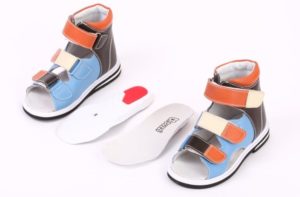

 0
0